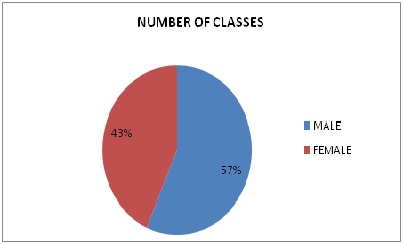Peritoneal dialysis in PICU in a tertiary care hospital -a one year analysis
Abstract
Background:Renal replacement therapy has as established role in the pediatric intensive care unit. Peritoneal dialysis (PD) has been successfully used as a therapy for Acute Kidney Injury (AKI) since 1946. It is a frequent choice for chronic dialysis support, especially in children. There has been shift in developed countries of using hemodialysis and hemofiltration for renal replacement therapy in AKI, though observational studies in children and systematic review in adults show no difference in mortality between PD and Hemodialysis and hemofiltration. Today acute PD is a modality most often used in the developed world where its simplicity, effectiveness, and low cost make it attractive.The role of peritoneal dialysis in PICU is not well defined, although it remains frequently used, especially in low-resource settings. Hence the present study was performed to describe the indications and outcome of patients on PD.
Objectives: Peritoneal dialysis in PICU – Indications and outcome.
Materials and methods:Study design- Retrospective study. Methods- All patients between the age group of 1 month to 15 years, admitted to PICU and requiring PD formed the study group. All details i.e demographic data, indications for PD, complications and outcome was entered in systematically designed proforma and analysed.
Results:Total of 30 patients was included in the study group. Out of 30,21children less than 5years,6 patients were between 5 to 10 years and 3 patients were between 10 to 15 years.Acute kidney injury (AKI) was the most common indication for PD (46%), followed by metabolic acidosis (40%) and chronic kidney disease (10%). Out of 30 patients, 16 patients recovered, 8 patients succumbed to the illness and 6 patients were referred to higher centre for Hemodialysis.Catheter blockage was the most common complication followed by bleeding and peritonitis. Hyperglycaemia was the most common metabolic disturbance seen followed by hypokalaemia.
Conclusion: PD is still one of the most commonly used renal replacement therapy in PICU in resource limited settings. AKI is the most common indication for PD followed by CKD and metabolic acidosis. Outcome of PD is better in infants than in other age group. Catheter blockage was the most common complication and hyperglycaemia was most common metabolic abnormality.
Downloads
References
2. Christopher ImokhuedeEsezobor, Taiwo Augustina Ladapo, and FolusoEbunLesi. Peritoneal dialysis for children with acute kidney injury in Lagos, Nigeria: Experience with adaptations. Peritoneal dialysis International,vol.34,pp 534-538 ,2014
3. Vidal E. Peritoneal dialysis and infants: further insights into a complicated relationship. PediatrNephrol. 2018 Apr;33(4):547-551. doi: 10.1007/s00467-017-3857-3. Epub 2017 Dec 7.[pubmed]
4. Ponce D, Balbi A, Cullis B. et al. Acute PD: Evidence, Guidelines, and Controversies.SeminNephrol. 2017 Jan;37(1):103-112. doi: 10.1016/j.semnephrol.2016.10.011.[pubmed]
5. Akcan-Arikan A, Zappitelli M, Loftis LL, et al. Modified RIFLE criteria in critically ill children with acute kidney injury. Kidney Int. 2007 May;71(10):1028-35. Epub 2007 Mar 28.[pubmed]
6. Goldstein SL. Overview of pediatric renal replacement therapy in acute renal failure. Artif Organs. 2003 Sep;27(9):781-5.[pubmed]
7. Santos CR, Branco PQ, Gaspar A, Bruges M, Anjos R, Gonçalves MS, et al. Use of peritoneal dialysis after surgery for congenital heart disease in children. Perit Dial Int 2012; 32:273–9.
8. Humphreys BD, Soiffer RJ, Magee CC. Renal failure associated with cancer and its treatment: an update. J Am Soc Nephrol. 2005 Jan;16(1):151-61. Epub 2004 Dec 1.DOI:10.1681/ASN.2004100843.[pubmed]
9. Saddadi F, Najafi I, Hakemi MS, et al. Frequency, risk factors, and outcome of acute kidney injury following bone marrow transplantation at Dr Shariati Hospital in Tehran. Iran J Kidney Dis. 2010 Jan;4(1):20-6.
10. Bonilla-Félix M. Peritoneal dialysis in the pediatric intensive care unit setting. Perit Dial Int. 2009 Feb;29 Suppl2:S183-5.[pubmed]
11. Mohandas N, Chellapandian D. Value of intermittent peritoneal dialysis in rural setup. Indian JPerit Dial 2004; 6:19–20.
12. Ademola AD, Asinobi AO, Ogunkunle OO, Yusuf BN, Ojo OE. Peritoneal dialysis in childhood acute kidney injury: experience in southwest Nigeria. Perit Dial Int 2012; 32:267–72.
13. Gong WK, Tan TH, Foong PP, Murugasu B, Yap HK. Eighteen years experience in pediatric acute dialysis: analysis of predictors of outcome. PediatrNephrol2001; 16:212–15.[pubmed]
14. Van Biljon G. Causes, prognostic factors and treatment results of acute renal failure in children treated in a tertiary hospital in South Africa. JTropPediatr2008; 54:234–7.
15. Vachvanichsanong P, Dissaneewate P, Lim A, McNeil E. Childhood acute renal failure: 22-year experience in a university hospital in southern Thailand. Pediatrics. 2006 Sep;118(3):e786-91. Epub 2006 Aug 7.DOI:10.1542/peds.2006-0557.

Copyright (c) 2018 Author (s). Published by Siddharth Health Research and Social Welfare Society

This work is licensed under a Creative Commons Attribution 4.0 International License.


 OAI - Open Archives Initiative
OAI - Open Archives Initiative


